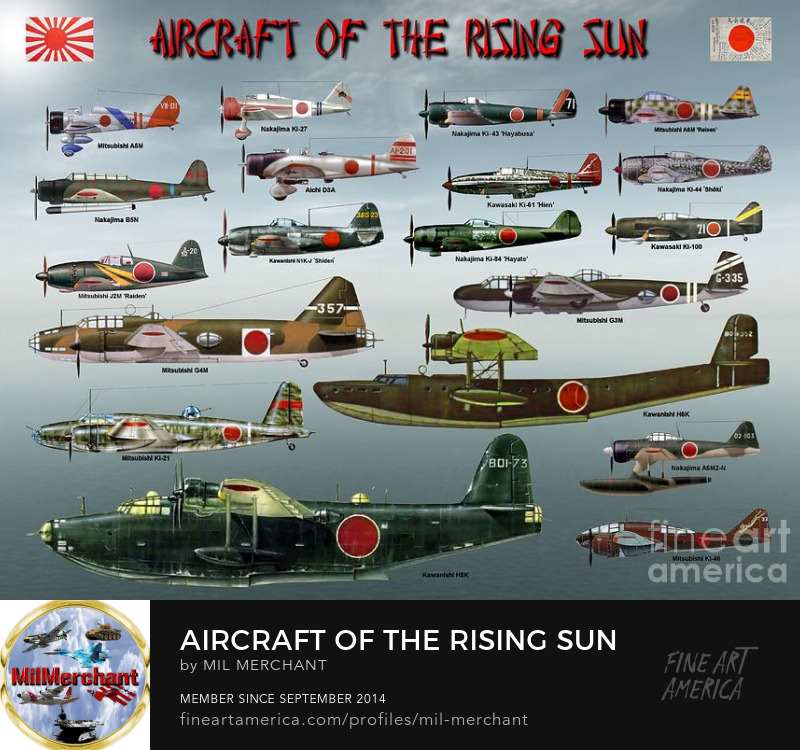 Kawanishi H6K Kawanishi H6K
The H6K was an Imperial Japanese Navy flying boat produced by the Kawanishi Aircraft Company and used during World War II for maritime patrol duties. The Allied reporting name for the H6K type was 'Mavis' and the Navy designation was "Type 97 Large Flying Boat".
H6K Type 97 Flying Boat
The H6K was designed as a result of a 8-Shi specification for a large flying boat issued by the Japanese navy in 1933. Kawanishi proposed two designs in response to this aircraft, the Type Q and Type R. Neither satisfied the Navy, and in 1934 a modified 9-Shi specification was issued. The new aircraft was to have a range of 2,500 nautical miles and a cruising speed of 120 knots. Kawanishi responded with their Type S, a parasol wing four engined flying boat. Three prototypes were constructed, each one making gradual refinements to the machine's handling both in the water and in the air, and finally fitting more powerful engines. The first of these flew on 14 July 1936 and was originally designated Navy Type 97 Flying Boat, later H6K. The Kawanishi H6K had a remarkable resemblance to the Sikorsky S-42. Both shared the same basic layout, with a parasol wing carrying four engines, similar arrangements of wing struts and similar twin vertical tails. The wings were also similar, with straight centre sections and tapering tips. However, the H6K was a much larger aircraft, eighteen feet longer, with a thirteen foot wider wingspan, and was significantly faster, with a top speed of 239mph, fifty miles faster than the S-42. The first prototype made its maiden flight on 14 July 1936, powered by four 840hp Nakajima Hikari 2 nine-cylinder air cooled radial engines. The original design had a number of flaws, most notable with the water handling and a lack of engine power. The first was solved by moving the forward step back by 50cm, and the second by installing 1,000hp Mitsubishi Kinsei 43 engines on the first, third and fourth prototypes. The modified aircraft was accepted for service as the H6K1 Navy Type 97 Flying Boat and entered production as the 'H6K2 Navy Type 97 Flying Boat Model 2'.
Into Service
The H6K made its combat debut during the war in China. When war began in the Pacific, there were four Kokutai(squadrons) that operated a total of 66 H6K4s. As well as its original long range reconnaissance role, the H6K was used for very long range bombing missions, attacking targets in the Dutch East Indies and on Rabaul. Eventually, from bases in the newly conquered Dutch East Indies, they were able to undertake missions over a large portion of Eastern and Northern Australia. This second role soon had to be abandoned in the face of more capable Allied fighters, which could take advantage of the aircraft's lack of armour or self sealing fuel tanks, but it was still able to operate as a maritime reconnaissance aircraft, operating over the vast expanses of the Pacific in areas free from Allied fighters. It would be replaced by the Kawanishi H8K 'Emily' after a production total of 217 being built.
At least three H6K boats at the turn of 1942-1943 were equipped with search radars (first used in the Imperial Japanese Army Air Service).
Back to Top
|
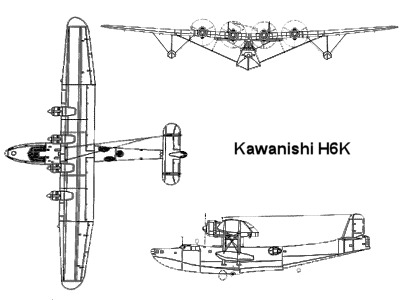 Kawanishi H6K View
Kawanishi H6K View
 Kawanishi H6K Cutaway
Kawanishi H6K Cutaway
|
Specifications(Kawanishi H6K):-
Country of Origin: Japan
Crew: 9
Length: 25.63 m (84 ft 3 in)
Wingspan: 40.00 m (131 ft 2 in)
Height: 6.27 m (20 ft 6 in)
Weight: Empty:11,707 kg (25,755 lb) Loaded: 17,000 kg (37,400 lb)
Powerplant: 4 × Mitsubishi Kinsei 43 or 46 14-cylinder, air-cooled, radial engines, 746 kW (1,000 hp) each
Performance
Maximum speed: 331 km/h (211 mph)
Cruise speed: 216 km/h (138 mph)
Range: 6,580 km (4,112 mi)
Service ceiling: 9,610 m (31,520 ft)
Rate of climb: 370 m/min (1,213 ft/min)
Armament
1× 7.7 mm (0.30 in) Type 97 machine gun in nose
1× Type 97 machine gun in spine
2× Type 97 machine guns in waist blisters
1× 20 mm Type 99 cannon in tail turret
2× 800 kg (1,764 lb) torpedoes or 1,000 kg (2,205 lb) of bombs
|
|
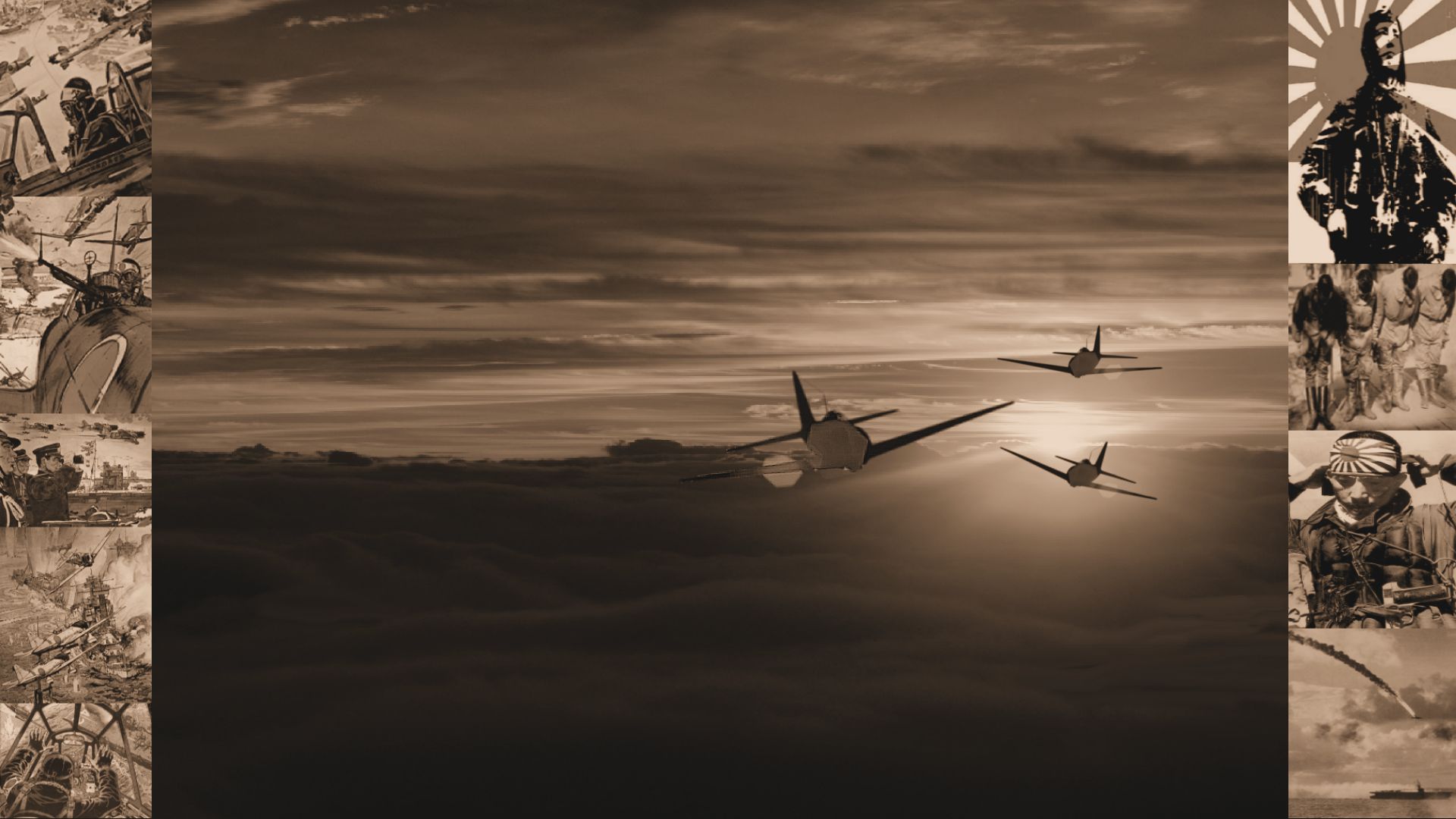


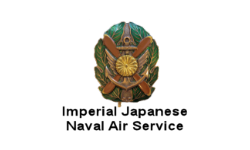
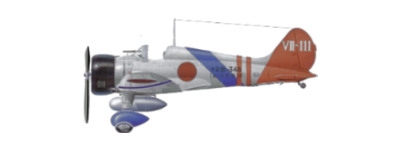 A5M
A5M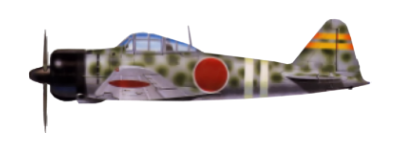 A6M Rei-sen
A6M Rei-sen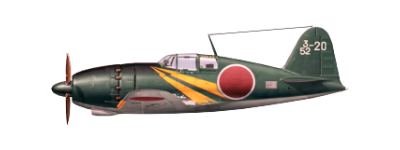 J2M Raiden
J2M Raiden N1K Shiden
N1K Shiden D3A
D3A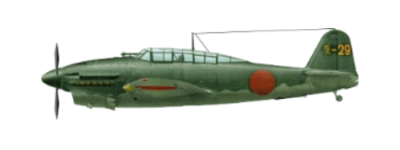 D4Y Suisei
D4Y Suisei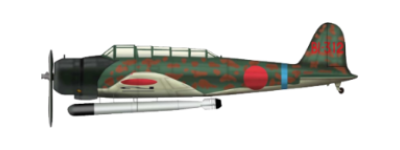 B5N
B5N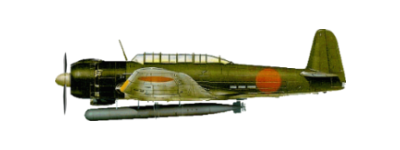 B6N Tenzan
B6N Tenzan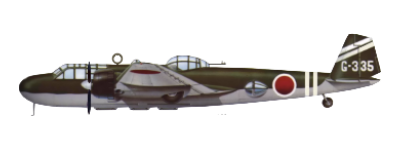 G3M
G3M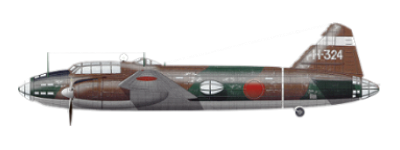 G4M
G4M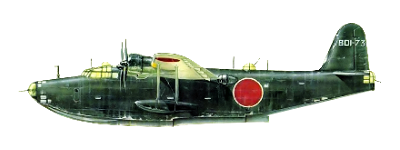 H8K
H8K



 Kawanishi H6K
Kawanishi H6K

